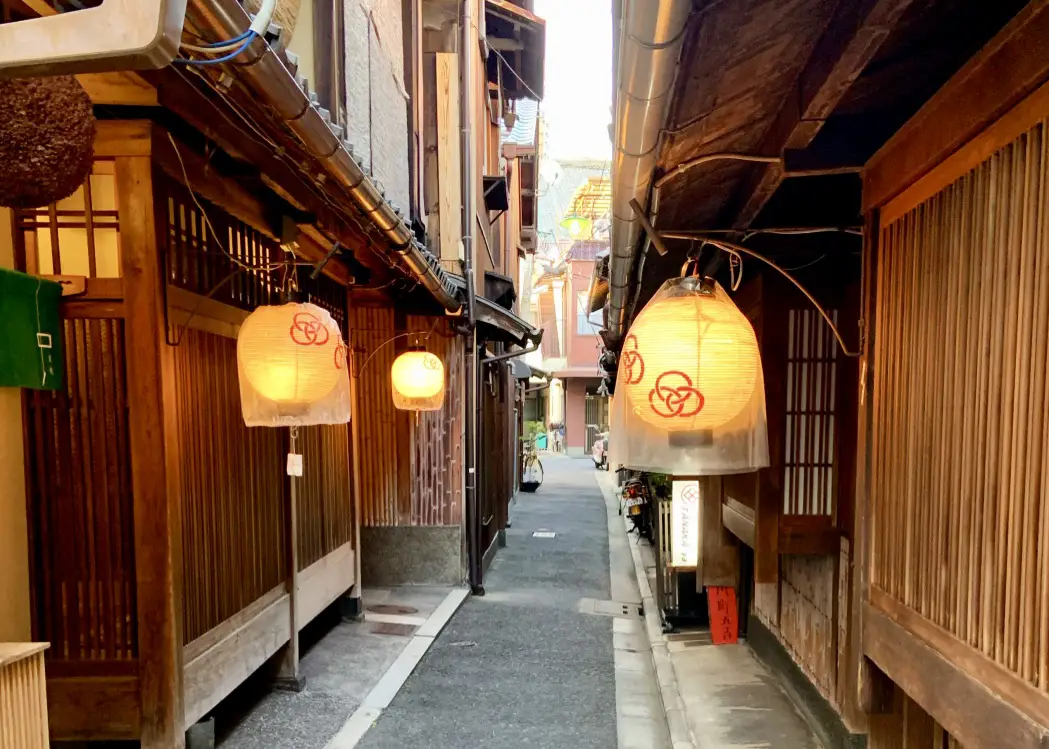
Last year Dave and I spent three weeks travelling around Japan and we enjoyed some wonderful sake but honestly, I didn’t really appreciate just how special it is. There are 2000 breweries in Japan and their products vary according to the climate and even the water. It’s also an incredibly skilled and lengthy process.
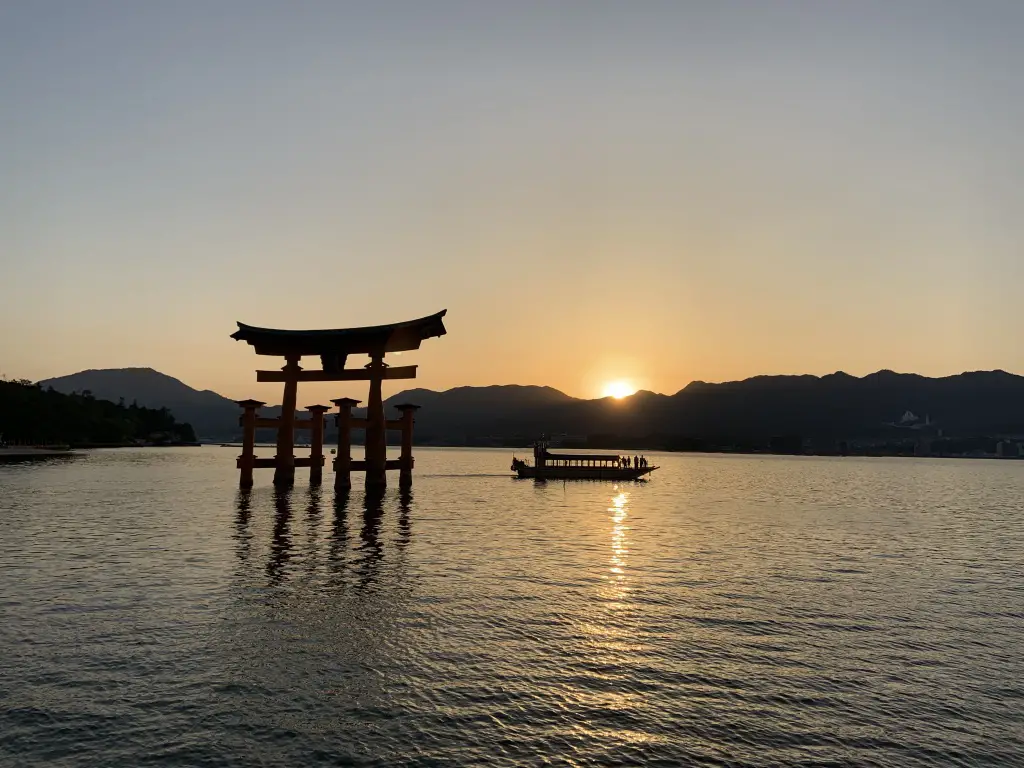
A quick history of Sake
It’s believed that Sake has been made and drunk in Japan for 2000 years. Records show that in the 8th century in the Heian period, the Imperial Court had a sake brewery and by the 15th century (Muromachi period) there were sake shops all over Kyoto. Techniques have changed over the centuries but by the better know Edo period in the 18th century, they were making sake and shochu in much the same way as it’s done today.
Sake plays an integral role in many Japanese shinto rituals. This is because rice in the past was considered the most precious staple food and offering food and sake was a way of giving thanks to the dieties. Now of course, rice is readily available and consumed every day but that doesn’t mean that traditions haven’t continued.
For example, sake is drunk at kagami-biraki (when they unseal a new sake cask). It’s sprinkled over a construction site and drank to celebrate the start of each season. At weddings the bride and groom exchange three cups of sake and take three sips as part of their vows. This is called san-san-kudo and the three symbolises good luck.
Etiquette 101
Japan is a country steeped in culture and traditions and when it comes to Sake, it’ll be no surprise that there are also certain etiquettes to follow.
Firstly, you should pour the sake with two hands, from the bottom of the tokkuri (the sake decanter), making sure to offer some to your companion before yourself. When you’re being poured sake, again, hold your choko (cup) from the bottom supporting it with both hands. Then, offer to pour for your companion.
You should never drink from the tokkuri, even if you’re drinking alone and definitely don’t shake it. This is considered poor etiquette and particularly bad if the sake is warmed as shaking it can cool it down.
Then, all that’s left is to toast and enjoy your first sip – Kampai!!
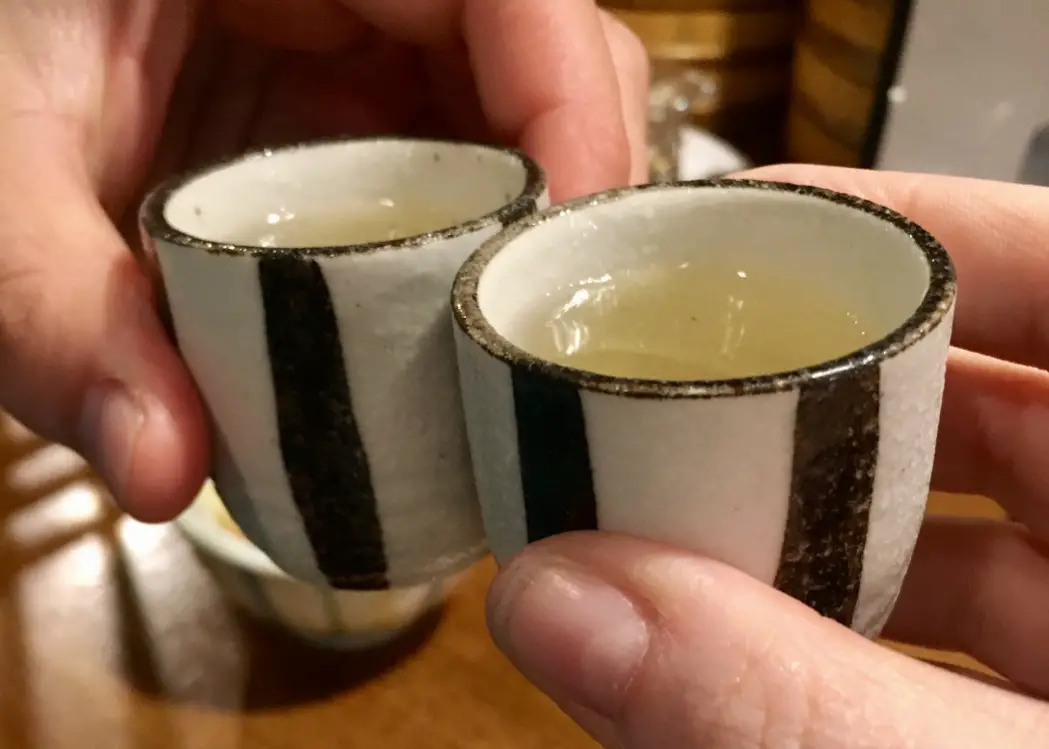
How to drink Sake
When we were in Japan we only drank Sake with our meals and much like a wine, it can be paired with food. That said, in Melbourne, I had a very fun night with a friend, drinking at the Nihonshy Shochu & Sake Bar. We tried many different varieties and I loved the dark, atmospheric space. When we return to Melbourne, I’ll be taking Dave there!
Having read more about the importance of sake in social bonding, I feel especially happy to have spent this evening with my friend as we don’t spend that much time hanging out in a two and without realising it, we were practicing katame-no-sakazuki (exhanging sake cups as a pledge of friendship). How fab is that?

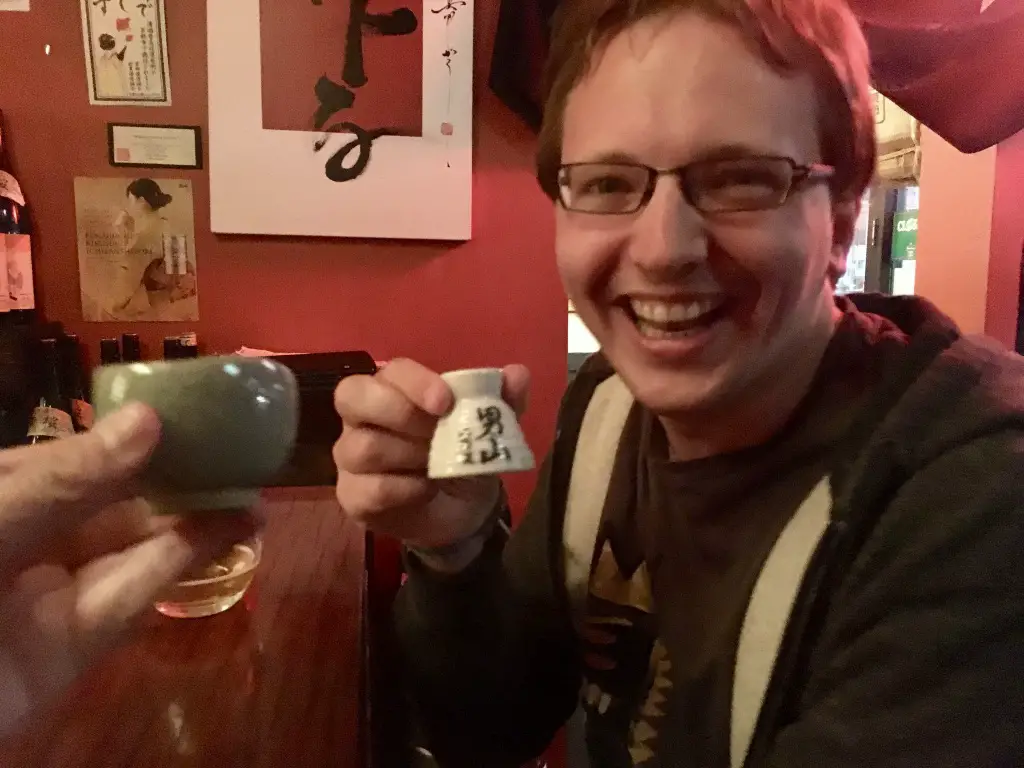
During our stay at a Ryokan we were lucky enough to experience a traditional Japanese Kaiseki meal. This multi-course dinner is made up of many intricately prepared and visually stunning dishes which reflect the region and the season. We loved every moment of it and a highlight was the sake we drank alongside the food. It was fruity and crisp, served chilled, and perfect for the fish and tempura we were eating. Now if anyone can read Japanese and tell me more about it, I’d be very happy!
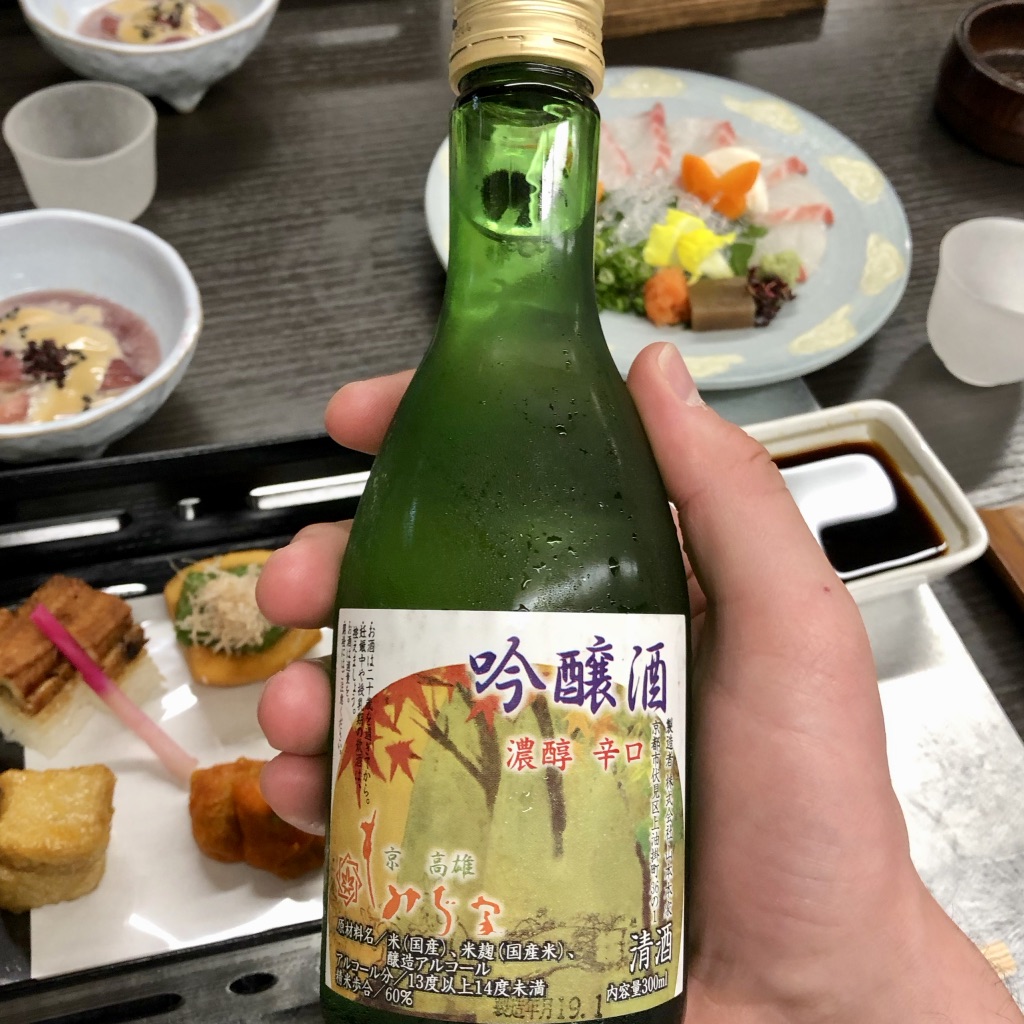
Sake is often served warm too, and is heated in hot water. It’s also often served very chilled too – as this example was that we drank with a wonderful meal at Mametanuki in Miyajama, just off the coast of Hiroshima. It matched our seafood meal perfectly and we loved watching the chefs at work.
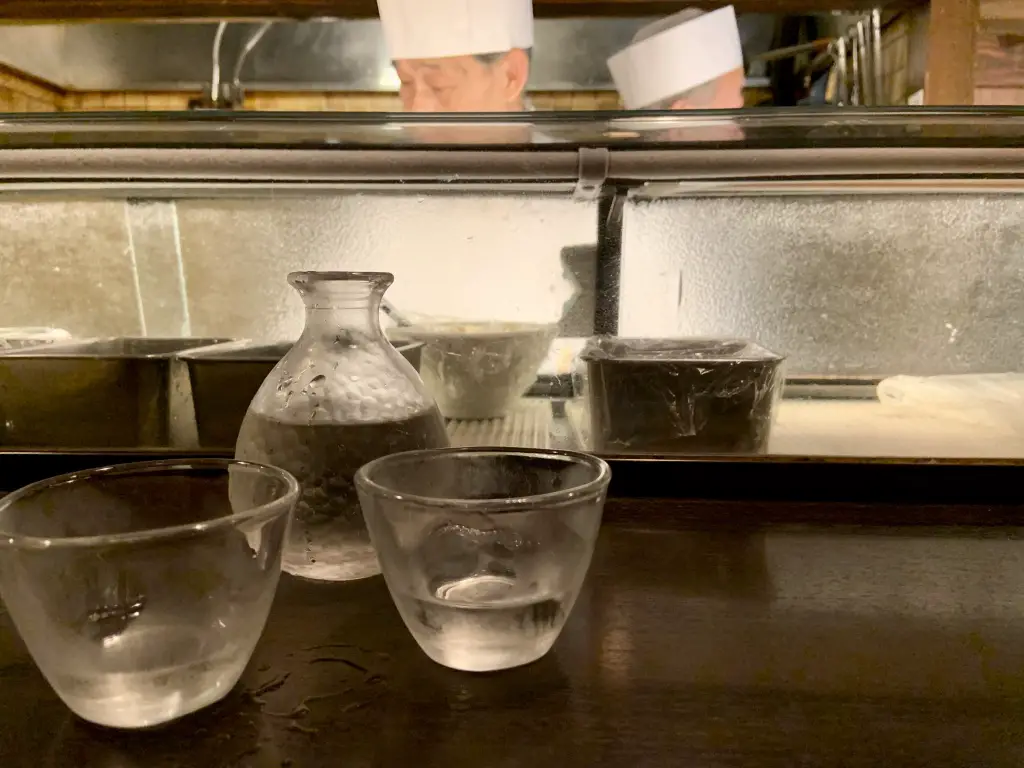
Where to buy
Ok, so here in the UK, Sake isn’t something you’ll typically find on the supermarket shelves (not all of them at least!) but it is widely available, if you know where to look.
My first recommendation would be your local Asian supermarket. Alot of them have a small selection of Sake for sale, especially the bigger ones. Wai Yee Hong have a small selection available for delivery as well as in store. The Good Wine Shop also have some available for UK wide delivery.
For a wider selection, Japan Centre is a great option. They have loads to choose from as well as some Shochu should you want to try that too. If all else fails you can try Amazon although please do try and support independents first.
Next up
In my next blog about Sake I’ll be taking you through the two sakes gifted to me by JSS. I’ll be pairing them with Japanese food so keep your eyes peeled for some new recipes too!
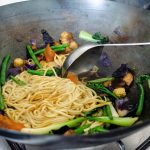


I watched a documentary that showed how to make sake…it was quite interesting! I’ve never had it but very intrigued!
Was that the one on Netflix? We watched one a few years ago and it was fascinating!
Thanks for talking about Melbourne in your post. Sadly the Nihonshu Sake & Shochu Bar closed in early 2020. We’ll just have to find you more cool, dark atmospheric places to hang out in and drink sake 🙂
Oh no!! I loved that place. What a shame. Thanks for letting me know 🙁
Great post, I know nothing about Sake and have never tried it. I love the history and the ritual with serving this drink.
Like others, I don’t have any idea what sake is but through this post I am able to know things about it. Thank you so much!
This is really interesting. I have actually never tried to drink a sake, I’ve just been cooking with it. Serving it warm sounds so cozy.
Wow, the Japanese have been drinking Sake for 2000 years! That’s an interesting piece of history, thanks for sharing!
We’ve enjoyed sake for a while now and always ask order it when we’re out on date nights. You’re experience with the process was enlightening. Thanks for sharing!
Great post! This was so interesting to read about sake! Thanks for sharing
I really like reading about the history of food and drink and loved learning more about sake in this post. I have drunk it on occasion in Japanese restaurants but knew very little about it. Interesting post!
How very informative this is! I haven’t tried sake but have heard often of it because it’s quite popular all over.
I don’t have sake often but I do enjoy it whenever we go out to eat at a Japanese restaurant!
Great post and thanks for introducing me to something new. Enjoyed reading it.